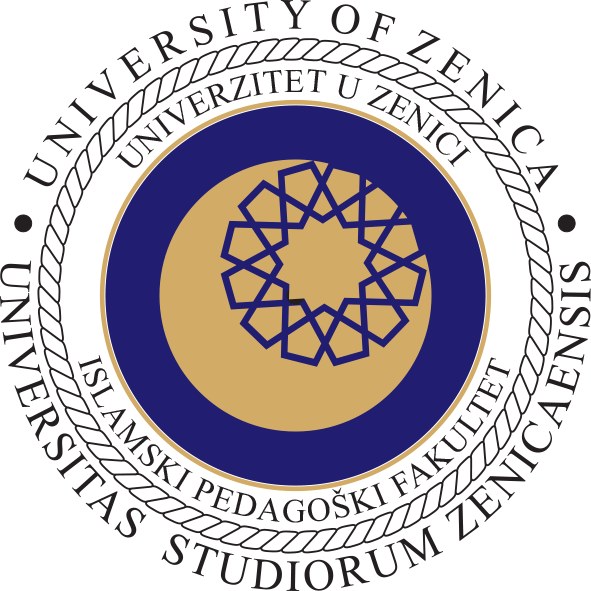INVERZIJA KOMPONENTI PRVE GENITIVNE VEZE U ROMANIMA MASUMİYET MÜZESİ, KAFAMDA BİR TUHAFLIK I KIRMIZI SAÇLI KADIN
The inverted word order is a stylistic marker in Turkish language, indicating that inversion of sentence elements occurs in contextually and stylistically marked situations. This paper examines contextual situations where the inversion of components of the first genitive case is applied. The analysis is based on examples found in the novels Masumiy...
By Edina Solak, Mirza Bašić, Azra Livadić
RELIGIJSKOPEDAGOŠKI ZNAČAJ AFIRMACIJE TRADICIONALNE TEFSIRSKE MISLI
The development of the religious identity of the members of any community, including the Muslim one, is the subject of religiouspedagogical intentions and based on them the upbringing/educational activities of the responsible scientists of the referential religious community. When it comes to the Islamic community, the Holy Qur'an is the fundamenta...
By Mensur Valjevac, Muamer Neimarlija
PERCEPCIJA PODRUČJA DJELOVANJA ASISTENATA U NASTAVI, OPTEREĆENOST ULOGA I POTEŠKOĆE U NJIHOVOM PROFESIONALNOM DJELOVANJU
Educational inclusion is a permanent process that enables equal participation of all students in the teaching process, allowing them to realize their potential. Teaching assistants greatly facilitate the participation of students with developmental disabilities in the educational process. The aim of this research is to examine the current position ...
By Ajša Bošnjaković, Azemina Maglić
MOGUĆNOSTI KORIŠTENJA SLIKOVNICE ZA PODSTICANJE GOVORNO-JEZIČKOG RAZVOJA DJECE U VRTIĆU
The aim of this research was to explore the potential use of picture books for promoting speech and language development in children in kindergarten, based on insights from relevant scientific-theoretical sources and the perspectives of educators. The research is descriptive in nature. The methods used included theoretical analysis and descriptive ...
By Maida Burajić, Amina Pehlić
DESKRIPCIJA FONOLOŠKE SVJESNOSTI KOD DJECE PREDŠKOLSKOG UZRASTA
The purpuse of this study was to exemine and describe the characteristics of phonological awareness of children 4, 5 and 6 years of age. The phonological awareness variable is operationalized through: rhyme recognition and production, sentence-to-word- decomposition, syllable decomposition and merging, and phonological decomposition and merging. ...
By Delila Ramić, Anela Hasanagić, ََAmina Pehlić
O KOHEZIJI TEKSTA U ARAPSKOM JEZIKU NA PRIMJERU KUR'ANSKE SURE NŪḤ
The subject of this research paper is textual cohesion as one of the characteristics of the textuality of the Qur'an. Bearing in mind that al-tamāsuk (cohesion) as a term appears very early in Arabic linguistic thought the aim of the paper is to offer a theoretical overview of text cohesion in Arabic linguistics. Additionally, following the guideli...
By Mithat Jugo
The competency passport in facilitating lifelong learning
A shift from a paradigm focused on content and a teacher as a transmitter of that content, to a paradigm focused on learning outcomes or competence, has been conditioned by a change in considering humans as active participants in their own life, for which the efforts of psychology in presenting self-regulation as a mechanism of assuming an active r...
By Eldar Čerim
Description of communication functions in preschool-aged children
The aim of this paper was to investigate communication functions in preschool- aged children and based on their description to make the classification. The research was conducted on the basis of a qualitative analysis of audio-visual recordings of children's speech recorded during supervised and free kindergarten activities. A number of earlier st...
By Amina Pehlić, Amina Odobašić, Anela Hasanagić
Miswak: from tradition to paradigm
This review paper explores the use of miswak, a teeth-cleaning twig made from the Salvadora persica plant, in maintaining oral hygiene and preventing oral diseases. Various aspects of miswak are analyzed, including its historical significance, chemical composition, pharmacological characteristics, and beneficial effects on oral health. The paper al...
By Edin Selimović, Emir Begagić, Hakija Bečulić, Muharem Adilović
A comparative analysis of students’ attitudćes towards responsibility for sustainable development
This paper presents a part of the theoretical and empirical research related to the topic of lifelong learning in the context of sustainable development. In order to contribute to the acceptance of the global concept of sustainability and its implementation in practice, in the theoretical part we define the term sustainable development, and we emph...
By Fatima Muhamedagić, Amir Đulić


